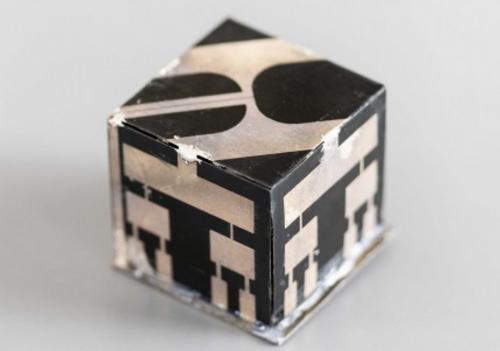
Researchers at KAUST have 3D-printed a cube that harvests the ambient energy from mobile phones and modems. KAUST stands for King Abdullah University of Science and Technology.
Researchers from KAUST, Saudi Arabia, worked with colleagues from Ho Chi Minh University of Technology, Vietnam. They wrote about their work in the journal Nano Energy (citation below).
As smart devices become progressively smaller, the task of powering them gets more challenging. KAUST researchers say they have developed an inexpensive energy harvester that will help recharge IoT devices. The harvester gathers the energy from waves that wireless devices emit.
IoT (Internet of Things) is a system of interrelated machines, devices, objects, people, etc. that communicate with each other. Your car, for example, communicates with your house, which communicates with dozens of devices at home and outside.
System-on-package
System-on-package is one way that researchers are miniaturizing many devices for IoT applications. It is an emerging microelectronic technology that places a whole system on a single chip-size package.
Recent studies have shown that the protective packaging around microelectronic devices could be utilized to accommodate components. It could accommodate, for example, communication antennas for considerably less cost and space requirements.
Making IoT devices more self-sufficient
Prof. Atif Shamim realized that system-on-package principles could help many IoT devices become more self-sufficient. Atif Shamim is an Associate Professor of Electrical Engineering at KAUST’s Computer, Electrical and Mathematical Science and Engineering Division.
Prof. Shamim and his team tried to find strategies to develop highly-compact antennas that could tune into mobile and wireless devices’ radiofrequency signals.
The researchers then teamed up with Khaled Salama’s group, also at KAUST. Together, they worked on converting this energy into electricity. To do this, they used semiconductor diodes.
Khaled Nabil Salama is a Professor of Electrical Engineering at KAUST’s Computer, Electrical and Mathematical Science and Engineering Division. He is also the Principal Investigator at KAUST’s Sensors Lab.
Tapping into more of the wireless spectrum
Radiofrequency harvesters usually only tap into a small part of the wireless spectrum. They might tap into, for example, the 3G standard. The KAUST researchers aimed to create a multiband device that could accumulate energy from several different sources of communication.
First author, Azamat Bakytbekov, a PhD student at KAUST, said:
“Asking one antenna to do the job of several others simultaneously is tricky. You have to make sure the performance doesn’t drop at any one frequency point.”

KAUST researchers build the harvester
To build their harvester, the research team converted a cube-shaped package into the mathematical concept of fractals. Fractals are very complex patterns that are self-similar across different scales.
The team started by 3D-printing a square plastic substrate. They then screened printed fractal antennas on its surface using silver.
Finally, they glued all the five plastic pieces together to form a cube. The cube was about five centimeters across.
Fractal antennas are able to introduce multiple resonances. This allows them to access a broader range of the radio spectrum.
In a press release, KAUST made the following comment regarding the cube:
“The symmetric geometry of the cube worked to enhance this effect by gathering radiation all around the cube. Subsequent wireless spectrum scanning revealed several distinct frequencies where energy harvesting could work.”
Real-world testing showed that the harvester gathered enough radio energy to power small wireless sensors. However, what happened when smartphone users walked near the 3D cube fascinated the researchers the most.
Co-author, Thang Nguyen, a Masters Student at Ho Chi Minh University of Technology, said:
“We saw the power gathered by the cube suddenly shoot up when a person nearby made a call. With the increase in mobile communication, this concept enables more and more radiofrequency energy to be harvested.”
What is 3D printing?
3D printing means using a 3D printer to make 3-dimensional objects. It is a type of additive manufacturing. In other words, you add layer upon layer until you have completed your target object.
It contrasts with subtractive manufacturing, which works the other way round. With subtractive manufacturing, you begin with, for example, a block of metal. You gradual remove bits of it until you have your target object.
Citation
“Fully printed 3D cube-shaped multiband fractal rectenna for ambient RF energy harvesting,” Azamat Bakytbekov, Thang Q.Nguyen, Cuong Huynh, Khaled N. Salama, and Atif Shamim. Nano Energy, Volume 53, November 2018, Pages 587-595. DOI: https://doi.org/10.1016/j.nanoen.2018.09.022.
